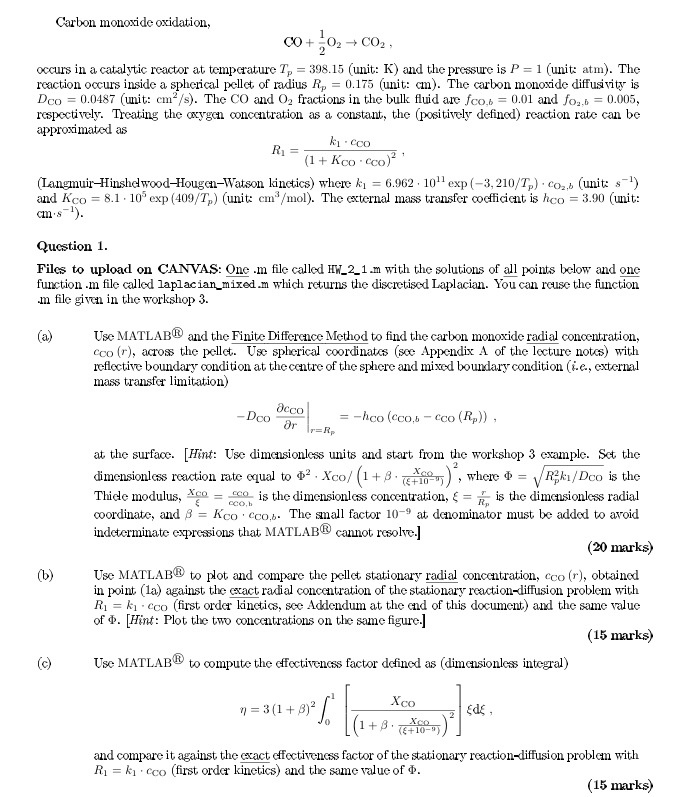Answered step by step
Verified Expert Solution
Question
1 Approved Answer
Carbon monoxide oxidation, C O + 1 2 O 2 C O 2 , occurs in a catalytic reactor at temperature T p = 3
Carbon monoxide oxidation,
occurs in a catalytic reactor at temperature unit: and the pressure is unit: atm The
reaction occurs inside a spherical pellet of radius unit: The carbon monoxide diffusivity is
unit: The and fractions in the bulk fluid are and
respectively. Treating the oxygen concentration as a constant, the positively defined reaction rate can be
approximated as
LangmuirHinshelwoodHougenWatson linetics where expunit: :
and expunit: The cxternal mass transfer cofficient is unit:
:
Question
Files to upload on CANVAS: One file called HW with the solutions of all points below and one
function file called laplacianmixed.m which returns the discretised Laplacian. You can reuse the function
file given in the workshop
a
Use MATLAB and the Finite Difference Method to find the carbon monoxide radial concentration,
across the pellet. Use spherical coordinates soe Appendix A of the lecture notes with
reflective boundary condition at the centre of the sphere and mixed boundary condition ie external
mass transfex limitation
at the surface. Hint: Use dimensionless units and start from the workshop example. Sct the
dimensionless reaction rate equal to where is the
Thicle modulus, is the dimensionless concentration, is the dimensionless radial
coordinate, and The small factor at denominator must be added to aroid
indeterminate expressions that MATLAB cannot resolve.
marks
b
Use MATLAB to plot and compare the pellet stationary radial concentration, obtained
in point a against the exact radial concentration of the stationary reactiondiffusion problem with
first order linetics, see Addendum at the end of this document and the same value
of Hint: Plot the two concentrations on the same figure.
marks
c Use MATLAB to compute the effectiveness factor defined as dimensionless integral
and compare it against the exact effectiveness factor of the stationary reactiondiffusion problem with
first order kinetics and the same value of
marks

Step by Step Solution
There are 3 Steps involved in it
Step: 1

Get Instant Access to Expert-Tailored Solutions
See step-by-step solutions with expert insights and AI powered tools for academic success
Step: 2

Step: 3

Ace Your Homework with AI
Get the answers you need in no time with our AI-driven, step-by-step assistance
Get Started


